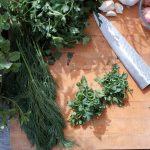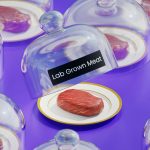How to Create Flavorful Infusions: Tips for Infusing Oils and Vinegars
Advanced Techniques and Tips
Mastering advanced techniques in infusing oils and vinegars involves striking a balance in flavor complexity and understanding the process of long-term flavor maturation. Incorporating diverse herbs and spices, and managing infusion times are crucial.
Balancing Flavors for Complexity and Depth
Achieving a harmonious blend requires careful consideration of herbs and spices. Combining ingredients such as rosemary with lemon peel can create a refreshing profile, while thyme and garlic lend a savory depth.
Infusers should experiment with ratios. For instance, a 2:1 ratio of basil to chili can provide a gentle heat, enhancing without overpowering. Muddling herbs before adding them magnifies their flavors.
Monitoring the infusion process guarantees that neither element becomes dominant. Tasting regularly helps in fine-tuning, creating a balanced symphony of flavors.
Long-Term Flavor Maturation
Allowing infusions to mature over extended periods enhances their taste. Over weeks, oils and vinegars absorb the full essence of herbs and spices. Properly sealing containers prevents contamination and allows for secure aging.
Storing infusions in cool, dark places avoids degradation by light or heat. This controlled environment contributes to nuanced and robust infusions.
Long maturation brings out subtleties—fennel seeds, for instance, deepen in sweetness, while star anise softens, integrating into the base. Being patient yields results with rich and fully developed flavors, providing a standout culinary experience.
Packaging and Presentation
To enhance the appeal and preserve the quality of your infused oils and vinegars, thoughtful packaging and presentation are crucial. Pay close attention to bottling techniques and aesthetics that can elevate both the experience of giving and receiving these creations.
Bottling and Labeling Your Infusions
Choosing the right bottle acts as both a protector and a showpiece for your infused liquids. Glass bottles are preferred due to their non-reactive nature, helping maintain the flavor integrity of infused oils and vinegars. Dark-tinted bottles are especially recommended for oil infusions as they shield the contents from light, prolonging shelf life.
Labeling adds an informative and personal touch. Clearly indicate the type of infusion, the date of creation, and any special ingredients. Aesthetic labeling, including beautiful fonts or graphics, can further captivate the end-user. Waterproof labels are recommended to withstand any moisture or oil spills.
Gift Ideas and Crafty Packaging Tips
Infused oils and vinegars crafted with care make excellent gifts. To create an attractive gift package, consider using baskets or wooden crates to hold multiple bottles. Decorate with natural elements like raffia or burlap to give a rustic feel.
Including a recipe card featuring the use of the infusion can add thoughtful value. Gift tags or small charms tied to the neck of the bottle can personalize the presentation. Using recycled or eco-friendly materials for wrapping can appeal to environmentally conscious recipients. Each element should work together to enhance the overall gifting experience.



